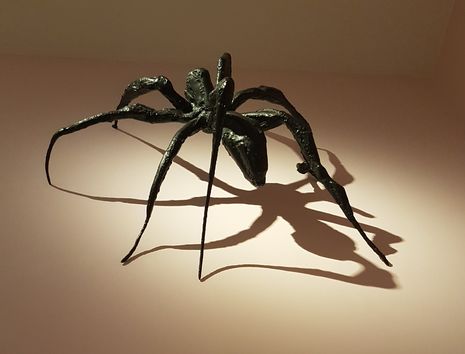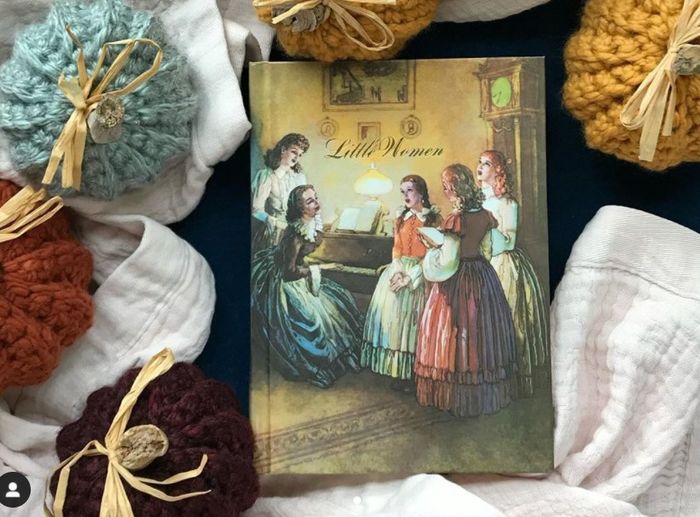Sewing and safety: Louise Bourgeois’ spiders
In her second instalment, Angharad Williams looks at Louis Bourgeois’ conceptions of parenthood, spiders, cannibalism and all

Home is a theme which occurs time and time again in both literature and art. It is most often evoked in reference to the childhood home, and so it would appear that the places we grow up in stay with us well into adulthood. It is this idea that is key to understanding the work of Louise Bourgeois, an influential artist of the twentieth century, whose work often centred around themes of family and home. In particular, Bourgeois sought to use her artwork as a way of making sense of her childhood experiences. Her work offers us an insight into her understanding of home, as defined by the relationships it contained.
“For Bourgeois then, art acts as a form of therapy, which facilitates an exploration of her childhood memories”
The theme of home is not instantly recognisable in Bourgeois’ work, as she tends to approach the personal in an abstract manner; this is made clear in her 1974 piece, Destruction of the Father. The dramatic sculptural work features a box lined in cloth, made to look like a theatre stage. This theatrical framing gives the viewer the impression that the work depicts not real events, but ones stemming from Bourgeois’ imagination. On the stage of the theatre, a series of curved shapes surround a raised platform, which appears to represent a large dining room table. Paying closer attention to the platform, it is possible to make out one large figure, which is being eaten by several smaller ones. The setting of the scene – coupled with the name of the piece – leads the viewer to the unsettling realisation that the fantasy they are witnessing is the cannibalisation of the father by his own children.
It is not just her father that Bourgeois featured in her work; her relationship with her mother was another prominent theme. As with her father, Bourgeois does not directly depict her mother. Instead, she represents her through the use of a spider motif. This is epitomised in her 1999 work Maman, a towering sculpture of a mother spider visibly cradling her eggs. The eight-legged creature is a strange choice, as most people associate spiders with fear rather than love. The unusual choice is in fact a deeply personal one, which serves to acknowledge Maman as more than just a mother. Bourgeois’ mother was an embroiderer by trade, a delicate work not unlike a spider weaving its web. Although not nearly as violent, there is an unsettling edge to the piece, reminiscent of Destruction of the Father. The spider’s thin legs make the whole sculpture appear precarious and give it a distinctly fragile feel, not a term normally associated with a mother’s love.
Even considering just two of Bourgeois’ works, it is clear that home for her is a deeply fractured idea, one that is intertwined with feelings of love, but also anger and pain. For Bourgeois then, art acts as a form of therapy, which facilitates an exploration of her childhood memories. These memories in turn seem defined by the oppositional relationship Bourgeois perceived between her parents, and so Destruction of the Father and Maman can only be understood in relation to each other. The relationship between Bourgeois’ parents was damaged by her father’s affair with the family governess, and this event frequently appears to influence Bourgeois’ art. The fragility of the mother spider can perhaps be read as a comment on the emotional distress Bourgeois watched her mother endure. In the same vein Destruction of the Father is not just a child’s desire to regain control over the family home, but to protect their mother.
Home in the art of Louise Bourgeois emerges not so much as a place, but as a series of relationships. Her work acts as a form of therapy which enables her to explore her childhood memories, and her subsequent feelings towards her parents – and the relationship they shared.
 News / Eight Cambridge researchers awarded €17m in ERC research grants27 December 2025
News / Eight Cambridge researchers awarded €17m in ERC research grants27 December 2025 News / Downing investigates ‘mysterious’ underground burial vault 29 December 2025
News / Downing investigates ‘mysterious’ underground burial vault 29 December 2025 Lifestyle / Ask Auntie Alice29 December 2025
Lifestyle / Ask Auntie Alice29 December 2025 Sport / Hard work, heartbreak and hope: international gymnast Maddie Marshall’s journey 29 December 2025
Sport / Hard work, heartbreak and hope: international gymnast Maddie Marshall’s journey 29 December 2025 Interviews / Meet Juan Michel, Cambridge’s multilingual musician29 December 2025
Interviews / Meet Juan Michel, Cambridge’s multilingual musician29 December 2025










